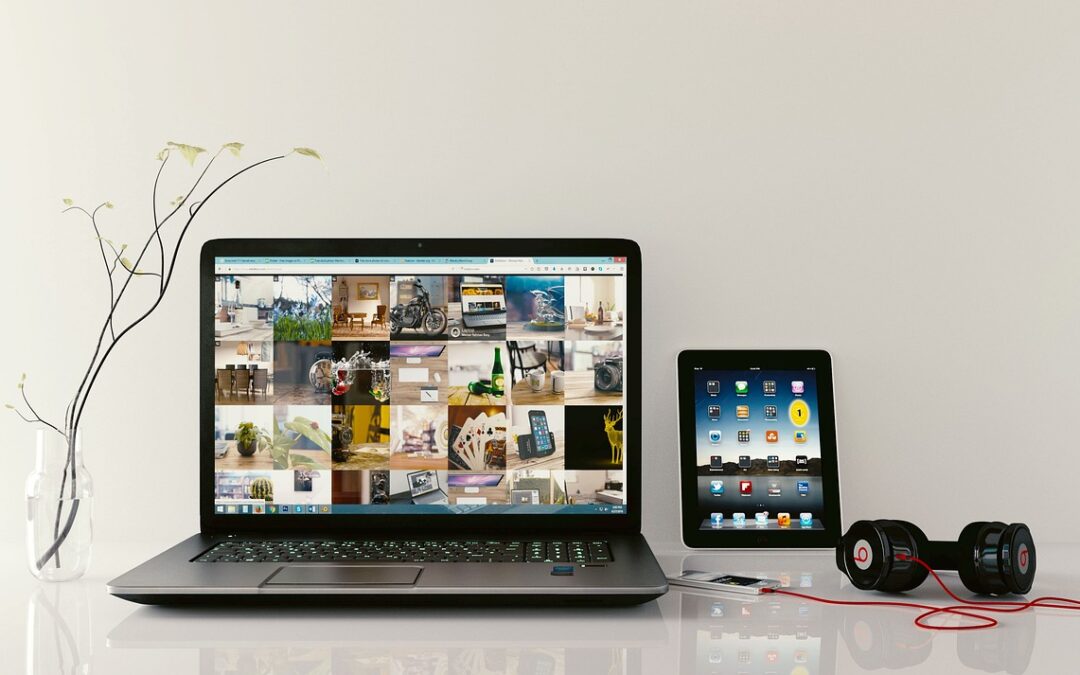*This post contains affiliate links. If you use these links to buy something we may earn a commission…Here is how it works!
“How do I choose my laptop?” a question many of us asked at least once in our lifetime. With such a huge variety of products these days, choosing our laptop can get overwhelming. Do I choose a specific brand, or go after the lower price or maybe a lightweight laptop? How do I differentiate between all these products and which one do I get to take home? To better answer these questions, we compiled a list of specifications to help you guide your purchase.
1. Determine your purpose
Consider your primary use for the laptop. Are you a student, a professional, a gamer, or just a casual user? This will influence your choice significantly. If you’re a student, consider whether you need a laptop for note-taking in class, research, and occasional gaming. Professionals might require a laptop for demanding tasks like video editing, 3D rendering, or software development.
2. Operating system
Choose between Windows, macOS, or Linux. The operating system affects software compatibility and user experience. If you’re a graphic designer, macOS offers a seamless experience with software like Adobe Creative Cloud. Windows is versatile and suits a wide range of needs, while Linux provides flexibility and customization for developers.
3. Performance
Decide on the level of performance you need, which depends on your tasks. Look at:
– Processor: For basic tasks, an Intel Core i5 or AMD Ryzen 5 is sufficient. For more demanding tasks, opt for an i7 or Ryzen 7
– RAM: 8GB is the minimum, but 16GB or more is better for multitasking and heavy applications
– Storage: Consider an SSD for faster boot times and application loading
Gamers should aim for a laptop with a powerful processor like an Intel Core i7 or AMD Ryzen 7, along with a dedicated GPU such as an NVIDIA RTX 30 series for smooth gaming. For everyday use, an Intel Core i5 or AMD Ryzen 5 is more than sufficient.
4. Size and portability
Choose a size that suits your needs. Smaller laptops (11-13 inches) are more portable, while larger ones (15-17 inches) offer better displays and more power. A 13-inch laptop like the MacBook Air is ultra-portable and easy to carry to classes or meetings. On the other hand, a 15-inch Dell XPS provides a larger, more immersive display for work and entertainment.
5. Battery life
Check the battery life. If you need a laptop for long hours on the go, aim for at least 8-10 hours of battery life. Frequent travelers should consider the LG Gram 14, which offers an exceptional 17-hour battery life, ensuring you can work or entertain yourself during long flights. For students, a MacBook Pro with around 10 hours of battery life is ideal for a full day of classes.
6. Display quality
Decide on resolution (Full HD, 4K) and panel type (IPS for better viewing angles and color accuracy). A high-quality display is essential if you work with images or videos. A Dell XPS 15 with a 4K OLED display is perfect for tasks like video editing, offering incredibly sharp visuals and vibrant colors. In contrast, a 1080p IPS display on the Lenovo ThinkPad provides excellent clarity and is well-suited for business and office tasks.
7. Graphics
For gaming or graphic-intensive tasks, a dedicated GPU is necessary. Integrated graphics are fine for everyday use. Gaming enthusiasts should look for a laptop like the ASUS ROG Zephyrus G14, equipped with a dedicated NVIDIA RTX 3060 GPU for high-quality gaming experiences. If you’re not into gaming, integrated graphics on a MacBook Air will handle everyday tasks without a hitch.
8. Connectivity
Ensure the laptop has the necessary ports, including USB, HDMI, and an SD card slot. A versatile laptop like the HP Spectre x360 comes with various ports, including USB-C, HDMI, and Thunderbolt, ensuring you can connect to a wide range of devices and accessories.
9. Build quality
Consider the laptop’s build materials, durability, and design. Metal laptops tend to be more durable. For example, the MacBook Pro boasts an aluminum build, known for its durability and premium aesthetics, making it a popular choice among professionals.
10. Keyboard and touchpad
Test the keyboard and touchpad for comfort and responsiveness, especially if you type a lot. The keyboard on the Lenovo ThinkPad series is famous for its comfortable and tactile typing experience, which is particularly appreciated by writers and those who type extensively.
11. Audio quality
Check the laptop’s speaker quality, or, consider using headphones or external speakers. The Dell XPS 13 features speakers tuned by Waves MaxxAudio, delivering a rich audio experience for music and multimedia consumption.
12. Price range
Set a budget. Laptops range from budget-friendly to high-end. Balance your needs with your budget. Consider budget-friendly options like the Acer Aspire series for basic tasks or opt for a premium laptop such as the Microsoft Surface Laptop for a luxurious build and performance.
13. Brand and warranty
Consider reputable brands and check their warranty and customer support. Lenovo, Dell and HP are well-regarded for producing reliable laptops and typically offer good warranty options, providing peace of mind for users.
14. Reviews and research
Read reviews and user feedback online to get insights into real-world performance and issues. Before making your purchase, research and read reviews on reputable websites like CNET, PCMag, and seek user feedback on online retailers such as Amazon or Best Buy to gain insights into real-world performance and user satisfaction.
15. Upgradability
Check if you can upgrade RAM, storage, or other components in the future. Gaming laptops like the ASUS TUF A15 are designed with upgradability in mind, allowing you to add more RAM or swap out storage for improved performance as your needs change over time.
16. Security features
Look for features like fingerprint readers or facial recognition for added security. The latest MacBook Pro models come with Touch ID, providing secure login and enhanced protection for your personal data.
17. Weight and portability
Consider the laptop’s weight if you plan to carry it frequently. The LG Gram series is known for its incredibly lightweight design, making it an excellent choice for travelers, whereas ASUS ROG laptops are bulkier but offer exceptional gaming performance.
18. Ecosystem compatibility
If you already have other devices (phones, tablets) from a specific ecosystem (Apple, Android, etc.), consider a laptop that complements your existing devices. If you already own an iPhone and an iPad, choosing a MacBook ensures seamless integration within the Apple ecosystem, allowing you to share data and resources effortlessly.
19. Environmental impact
Some laptops are more environmentally friendly. Consider the laptop’s impact on the environment. HP’s Elite Dragonfly series is designed with sustainability in mind, utilizing recycled materials and environmentally conscious manufacturing processes to reduce its overall environmental impact.
20. Buy from a reputable retailer
Purchase from a trusted retailer to ensure customer service and warranty support. Purchase your laptop from well-established retailers such as Amazon or directly from the official website of the laptop’s manufacturer to ensure reliable customer support and comprehensive warranty coverage, safeguarding your investment.
By considering these detailed examples, you can make a more informed decision when choosing a laptop that aligns perfectly with your unique requirements and budget. Remember that there’s no one-size-fits-all solution, so prioritize features that are most important for your specific use case.
Don’t forget to follow TLC on:
Web page: Http://www.thelanguageportal.net
Facebook page: The Language Club
Facebook group: The Language Club
Email: [email protected]

